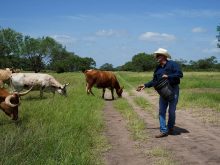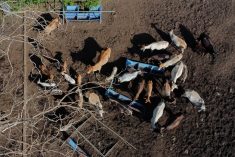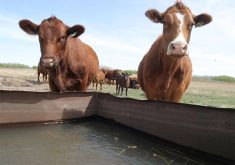Several prominent veterinary organizations recommend annual vaccination against rabies for all horses, mules and donkeys.
Sixty-nine positive cases of rabies were reported in Western Canada last year. Bats and skunks comprised the majority of animals that tested positive, but Manitoba had one horse.
Thirty-eight cases of rabies in horses have been reported in Western Canada over the last 13 years, which averages three cases per year.
The disease seems to have a low prevalence, but producers should consider several factors when evaluating its significance.
Read Also

U.S. cattle producers fear return of screwworm
Parasitic screwworm flies are pushing northward from Central America again after being officially eradicated from the United States in 1966, threatening $1.8 billion in damage to Texas’ economy alone.
Horse owners may not vaccinate against rabies for several reasons, including cost, inconvenience, low disease prevalence, risk of adverse reactions and potential for vaccine failure.
Rabies virus is shed in the saliva of infected animals. It is inoculated into the muscle and subcutaneous tissues during a rabid animal bite and then replicates locally.
The virus spreads rapidly up the nerves to the spinal cord and brain at a rate of three millimetres per hour. The animal’s behaviour changes to “furious” or “dumb,” depending on which part of the brain is infected.
The virus then ingeniously spreads back out from the brain through nerves to the salivary gland, where it enters the saliva. This allows transmission to another mammal when it bites.
Rabid domestic dogs are the most common source of infection for horses, but transmission from bats, foxes and domestic cats has also been reported.
Other species of rabid wildlife, including skunks and raccoons, also pose a risk to horses because of the erratic behaviour of diseased animals and the curious nature of horses.
The source of infection is never identified in most cases of rabies in horses.
Pastured horses are at an increased risk of exposure, especially during the late summer, which coincides with increased disease in wildlife.
Horses with current rabies vaccination status should be vaccinated immediately and observed for 45 days if contact with a known rabid animal occurs.
Horses that are not vaccinated are either immediately euthanized or observed for six months for evidence of the disease.
Rabies is classified as a reportable disease under the Federal Health of Animals Act. All cases with known human exposure must also be reported to public health authorities.
This zoonotic disease has been documented in 23 human cases in Canada since 1924.
The importance of rabies worldwide is especially evident in developing countries, such as India, where 20,000 people die annually from rabies. There are no documented cases of horse-to-human rabies transmission, but the potential risk should be seriously considered because untreated human cases have almost 100 percent mortality.
The clinical presentation of rabies in horses can be difficult to distinguish from other neurologic and musculoskeletal diseases. A firm diagnosis is achieved only by a microscopic testing of the brain after death.
Although rabies has been treated successfully in horses, preventive measures should be taken.
Make property less appealing to wildlife by securing feed bins, garbage cans and buildings. Although it’s not always practical, try to limit pasture turn-out in the late summer when rabies is most prevalent in wildlife.
Vaccinating dogs and cats decreases the chance of them spreading the disease.
A strong argument can be made in favour of vaccination in light of the low probability of witnessing exposure, 100 percent mortality without post-exposure vaccination, difficulty of diagnosis, lack of treatment and potential for human transmission.
The cost of a rabies vaccine compared to the value of the horse also supports vaccination.
Vaccine reactions and failure seem to be rare, especially given the rigorous testing required for rabies vaccines in Canada.
Consult with a veterinarian about whether it is right for you.














